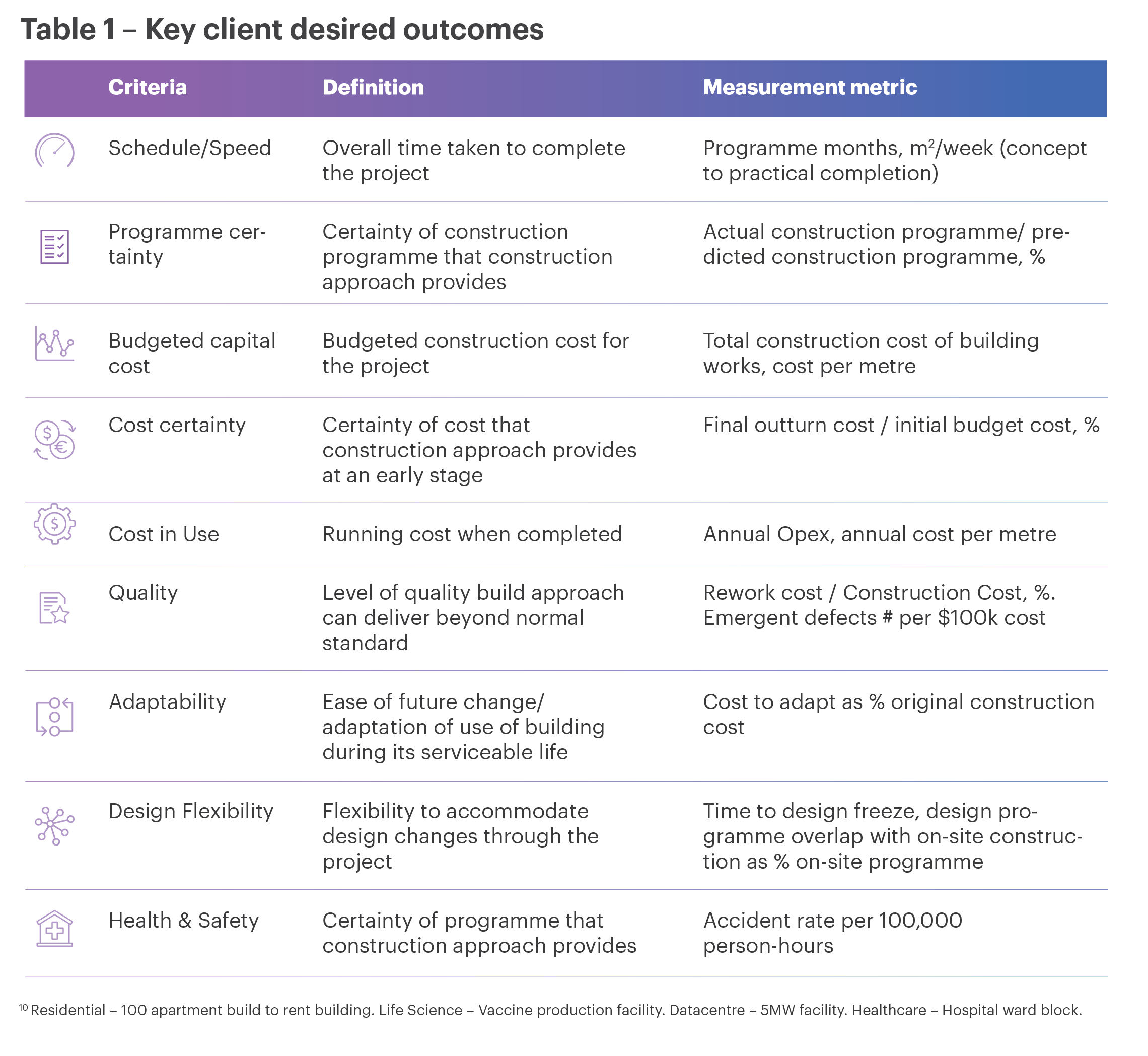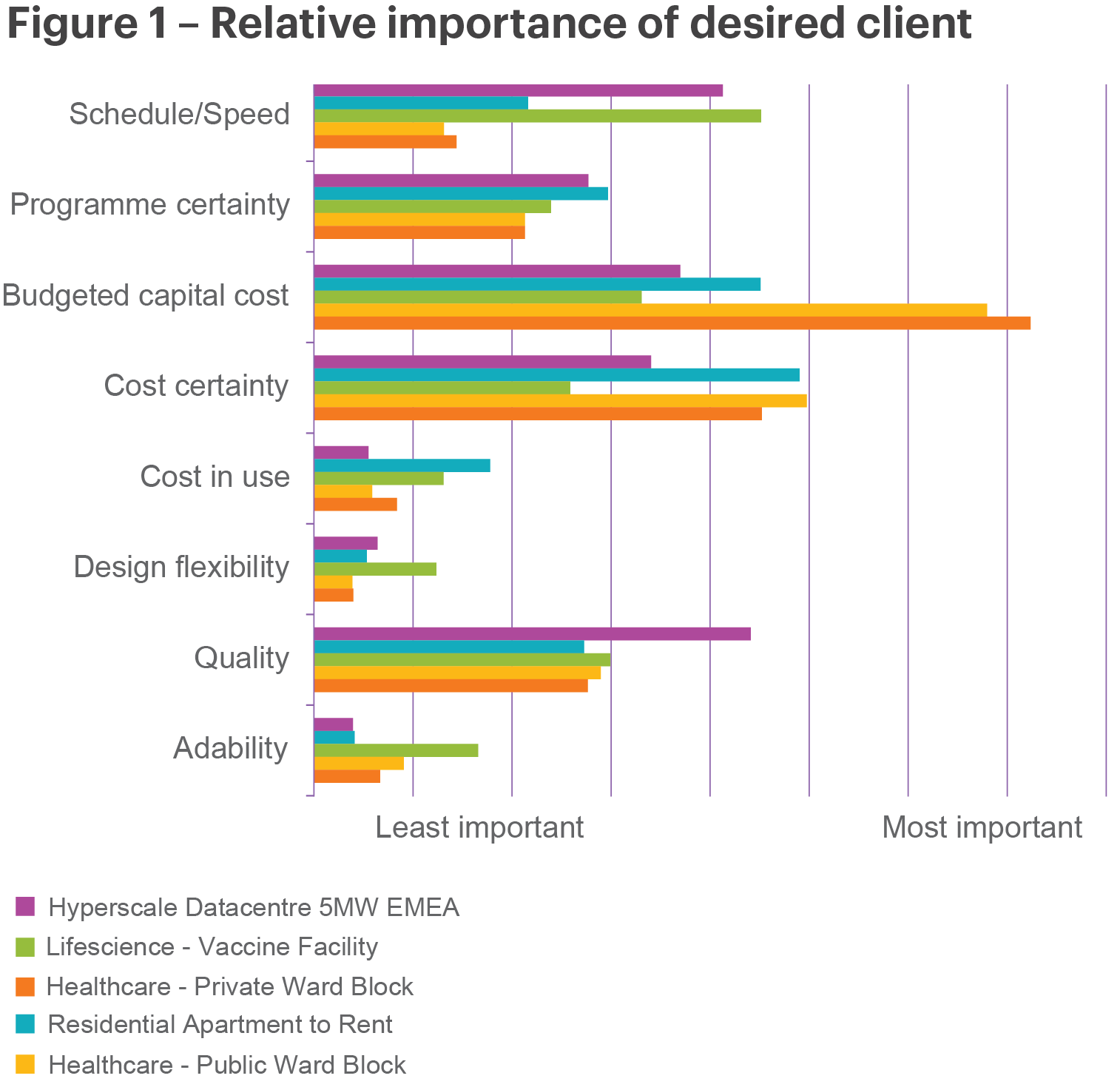The pandemic has helped fuel growth in the life sciences construction sector. Nigel Barnes explains where offsite has a role to play

There has been significant recent growth in the construction of life sciences facilities, partially driven by efforts to combat Covid-19. Offsite construction methods offer significant advantages in this sector. But how do you decide on the best approach for your laboratory project: traditional methods; offsite; or a hybrid?
Linesight’s research with a global client base has evaluated the key criteria that should inform when and where to use offsite methods, and from this, we have created a proprietary tool to guide the decision-making process.
Our analysis shows that the following decision criteria are common across the key sectors of life sciences, healthcare, residential and data centres.

Significantly, the importance of these criteria varied across project and industry type as the chart below shows.

Our research focussed on vaccine manufacturing facilities, which are of particular interest at present because pharmaceutical companies are faced with the challenge of developing rapid-build manufacturing facilities. In this highly regulated sub-sector, while schedule speed is critical, the most important drivers are schedule delivery with quality and cost certainty.
Overall cost has some significance, but an accurate up-front estimate, which allows clarity around the investment decision, is seen to be highly important. This is because surprises can be minimised, resulting in more reliable budgets. For this reason, life sciences clients require strong project controls to ensure they deliver to the standards needed within budget and agreed schedule.
The life sciences sector has evolved quicker than many sectors in the adoption of modular construction, based on the need in this sector for early cost and programme certainty alongside high quality production. But clients will need to make informed choices about when to include offsite manufacturing as part of a construction project and this will involve filtering complex criteria.
Reasons to use offsite:
- Speed. Programme savings of up to 50% are possible compared with traditional forms of construction, but the capacity to deliver savings is dependent on many other variables. These can include prevailing market conditions, supply chain availability, overall building design and materials utilised.
- Cost. Potential for lower costs achieved through repetitive production processes and task-based operatives rather than trade skills.
- Programme certainty. reduced impact of weather and on-site supplier/trades interdependencies.
- Quality. Manufacturing precision and production quality management.
- Safety. Controlled environment and reduced working at height.
- Sustainability. Reduced waste, improved recycling and lower transport emissions.
- Accreditation, inspection and quality assurance. Offsite commissioning and acceptance can be completed in the controlled conditions of the factory and buildings attain a level of quality beyond that normally achieved on-site.
- Accelerated decision-making. Because projects tend to move quickly, there is limited scope for delaying important decisions.
Barriers to using offsite:
- Compressed timing. As the overall project is linear, the design and engineering phases need to be completed early.
- Delivery at acceptable cost. Absence of a fully-formed, mature supply chain in many markets. Limited competition in some regions can result in increased costs, limited choice and higher risk.
- Logistics. Cost and scheduling implications for transport and delivery to site for large modules.
- Supply chain limitations. Risk of commitment to a single manufacturer and limited supplier options.
- Financing/cash flow. Cashflow/financing challenges, as offsite requires cost commitment at start of project. Traditional build enables financing on a phased basis.
- Fire safety. Certification can be an issue in regions where offsite is at low level of maturity.
- Proximity of suppliers. Transporting modules is always required, but cost and time both increase with the distance from supplier to site.
Nigel Barnes is head of life science EMEA at consultant Linesight.
Comments
Comments are closed.












No mention of cat 3 safety & security requirements !